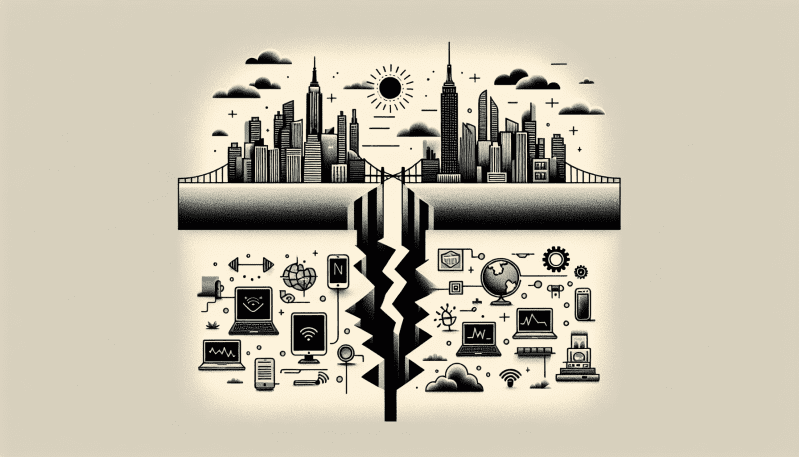As New York continues to navigate the uncharted waters of a post-pandemic world, the adoption of remote work has surged, offering a new canvas of opportunities for many. However, amid the skyline of digital progress, a stark divide casts a long shadow over the city – a digital divide that threatens to leave thousands of workers behind as we sail into the future of work. This digital divide has exposed significant disparities in access to reliable internet, affordability of technology, and levels of digital literacy, impacting various demographics in profoundly unequal ways.
The reliance on remote work has underscored the critical need for high-speed internet not as a luxury, but a necessity akin to electricity or running water. Yet, in a city as diverse and expansive as New York, broadband access remains a lottery of location and income. Low-income families and certain ethnic communities often find themselves grappling with subpar connectivity or none at all – a reality that stifles professional growth and equitable access to job opportunities.
The disparity doesn’t stop at connection issues. The affordability of technology – from laptops to smartphones – is another hurdle. In a city where the cost of living soars above national averages, the price of essential tech can be prohibitive for many. This leaves a portion of the workforce at a disadvantage, unable to participate in the remote work landscape that’s fast becoming the new norm.
Then there’s digital literacy – the backbone of digital proficiency that empowers individuals to navigate, communicate, and work online effectively. Across New York’s boroughs, a patchwork of expertise exists, often correlating with education levels and generational gaps. From young adults to the elderly, the skills to thrive in a digital ecosystem are unevenly distributed, exacerbating the chasm that the digital divide represents.
Experts from educational, technological, and social policy spheres have weighed in, echoing the sentiment that bridging this digital divide requires concerted effort. Educational institutions can spearhead training programs aimed at enhancing digital skills for all ages, while tech companies can invest in affordability initiatives, ensuring their products don’t become the exclusive domain of the privileged.
Moreover, public policy can play a pivotal role. Government bodies can incentivize the expansion of broadband infrastructure, especially in underserved areas, while providing subsidies or tax breaks that make technology more accessible. There needs to be a synergy of purpose, where the collective aim is to guarantee that remote work doesn’t become a stratified domain, but a level playing field for all New Yorkers.
New York stands at a crossroads where the actions taken today will define the landscape of work for generations. Bridging the digital divide is not only a matter of social equity; it’s a strategic investment in the city’s workforce. As The Work Times – the New York Times for Work, Worker, and Workplace – we advocate for a future where every New Yorker, regardless of socioeconomic status, can connect, engage, and compete in the burgeoning remote work era. The time to act is now, to ensure that no one is left disconnected from the lifelines of opportunity and progress.


























